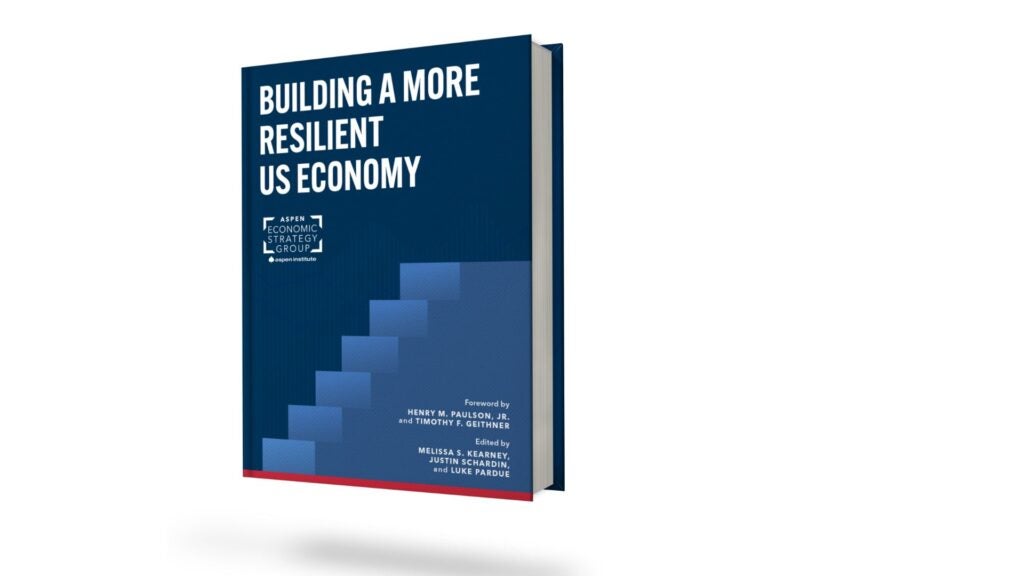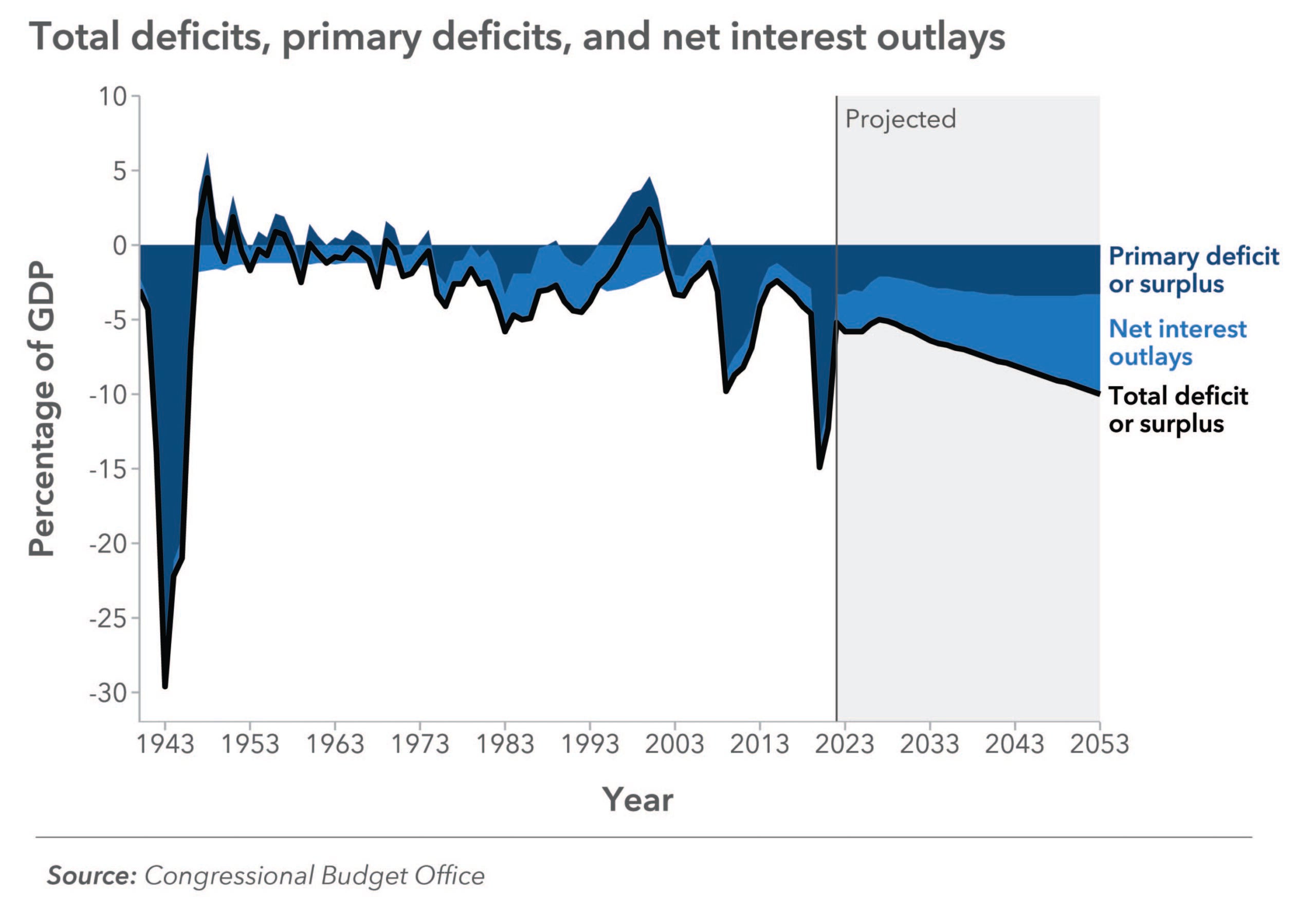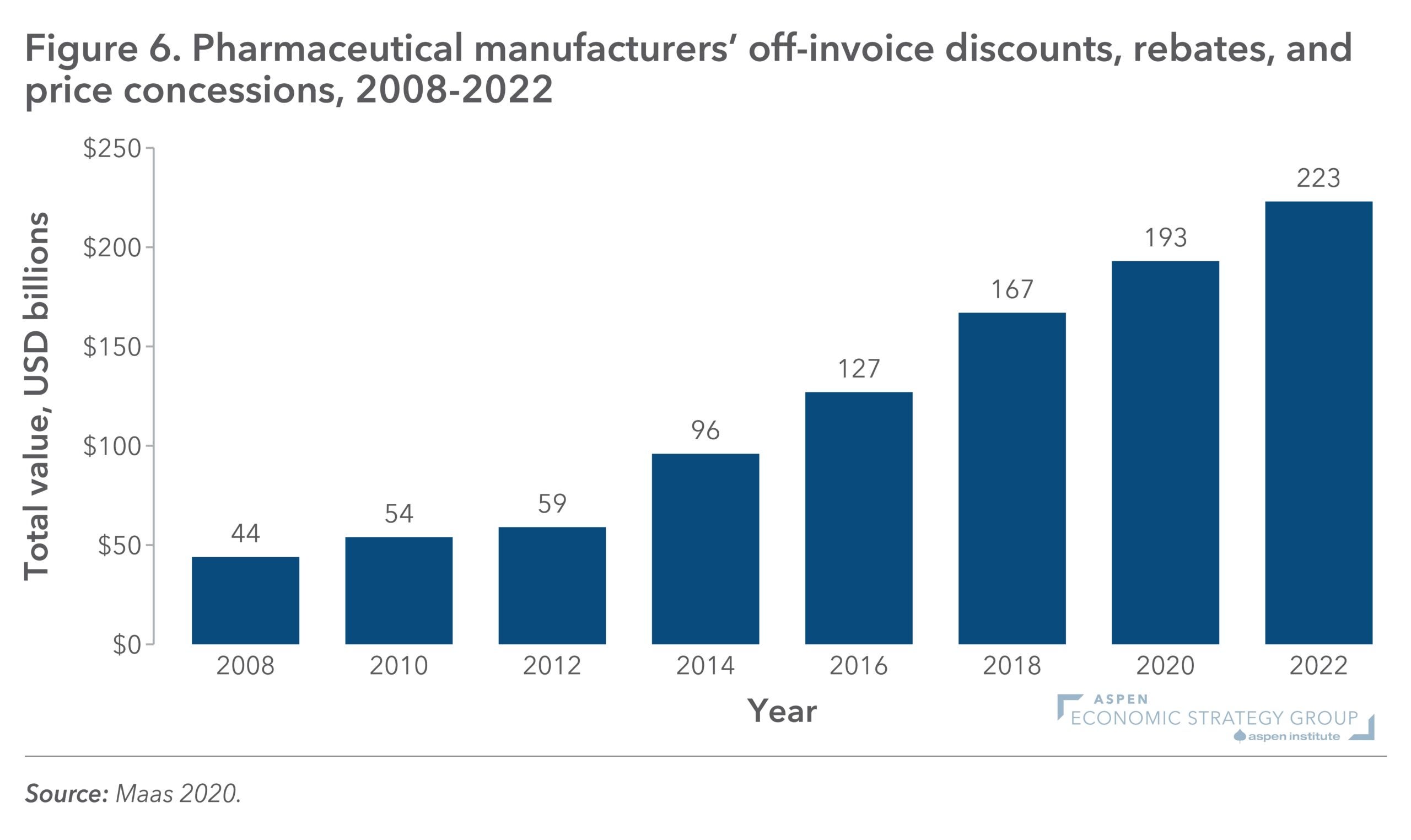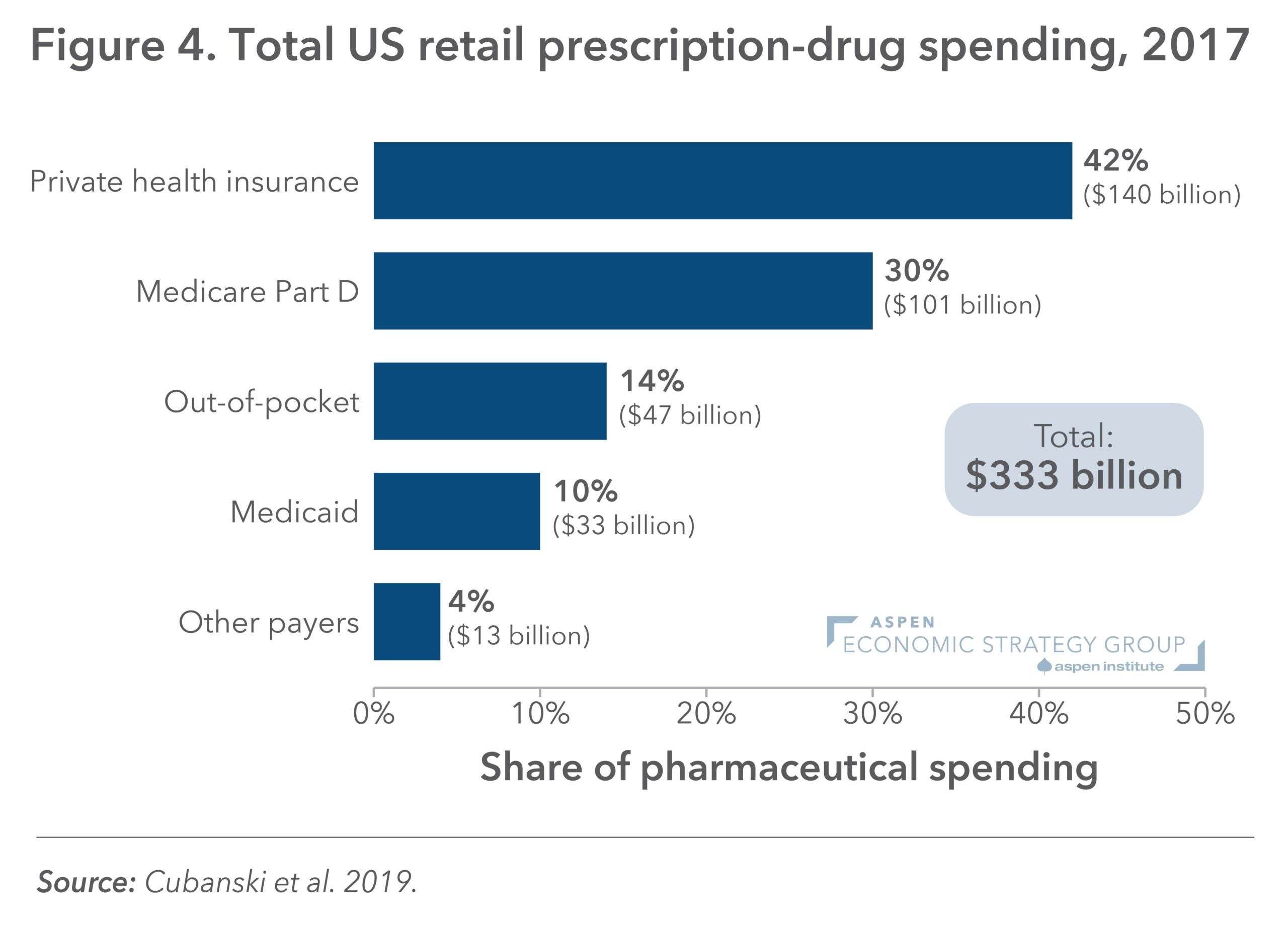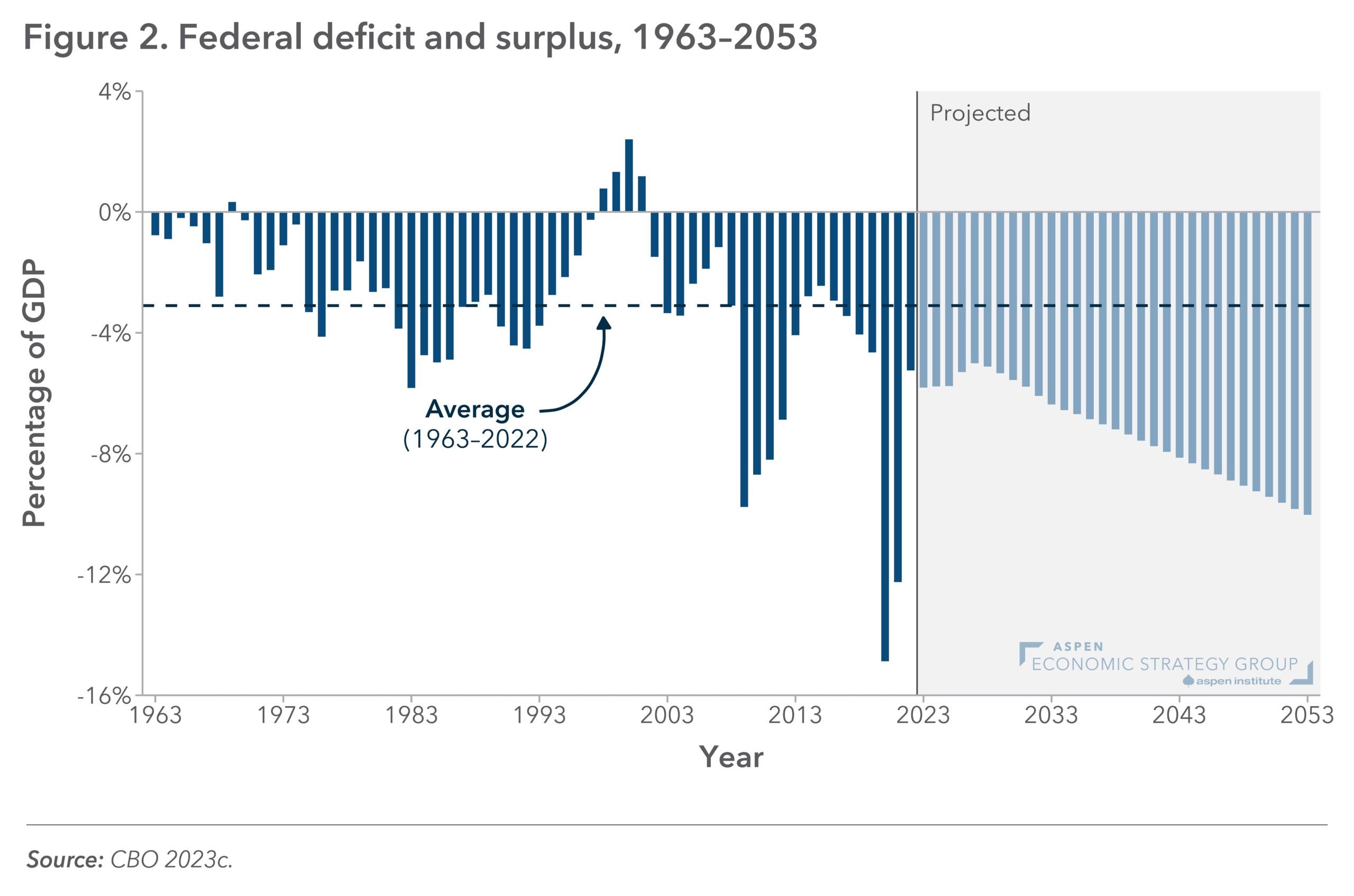The post-pandemic US economy features a strong labor market but also persistent inflation, rising levels of debt, and acute educational challenges. These issues are compounded by ongoing, systemic difficulties: domestic and global, economic and political. This policy volume considers these topics and others, with a thematic focus on building a more resilient US economy.
The federal government’s aggressive fiscal and monetary policy in 2020 and 2021 mitigated the potential economic losses from the pandemic-induced recession and sped up economic recovery. However, trillions of dollars of federal assistance boosted aggregate demand in the face of constrained supply, spurring inflation to highs not seen since the 1980s. Restrictive monetary policy in the form of higher interest rates has helped tame inflation.
The overall response, however, has left the United States with a higher accumulated debt and larger deficits going forward. These results are compounded by more persistent factors, including the aging of the US population and rising health care costs, which drive up spending on major US entitlement programs including Social Security and Medicare.
After a long period of low interest rates led to some complacency about the US federal budget situation, current forecasts point again to at least somewhat higher interest rates that will make the continued imbalance between federal spending and revenues unsustainable. Building a more resilient US federal budget will require reforms that narrow the gap between spending and revenues, while maintaining sufficient levels of both to support national priorities. Accomplishing this task will require bipartisan cooperation and forward-looking congressional leadership.
The US labor market has remained strong in the post-pandemic period, but it shows signs of cooling and still faces long-term challenges that predate the pandemic. Despite widespread worries about women disproportionately falling out of the workforce during the pandemic, female rates of labor force participation and employment now exceed pre-pandemic levels (US Bureau of Labor Statistics (BLS) 2023a).
However, male labor-force participation and employment rates have recovered more slowly and remain depressed compared to prior decades: 86.4 percent of prime-age men in the US were employed in August 2023, equal to the 2019 average but below the 87.9 percent averaged in the 1990s (US Bureau of Labor Statistics 2023a, 2023b). As prime-age men work at lower rates, and as an aging population pushes a larger share of workers into retirement, the size of the workforce will start to grow much more slowly than it has in the past. Over the next ten years, the US labor force is forecast to add half the number of workers it added from 1990 to 1999 (Congressional Budget Office 2023a).
Building a more resilient US workforce will require promoting widespread employment and making investments in youth and young adults to build human capital and skills. It is troubling that the pandemic accelerated already-declining college enrollment: in 2022, there were over one million fewer students enrolled in college than there were in 2019 (National Student Clearinghouse 2023).
The pandemic disruption also led to large losses in student learning. Assessment data from 1.6 million elementary school students across more than 40 states indicate that in the spring of 2021, students were on average five months behind in mathematics and four months behind in reading progress compared to pre-pandemic cohorts. Learning losses were even larger for students in majority-Black schools and schools with lower average family income (Dorn et al. 2021). That study estimated that, if left in place, this learning loss could reduce lifetime earnings by $49,000 to $61,000 per student. Making up for these learning losses before they become permanent is an urgent priority, but doing so will not be easy.
Both the pandemic shock and recent geopolitical developments, including rising tensions with China and the war in Ukraine, have demonstrated the fragility of US supply chains and production. Businesses that lowered costs through just-in-time inventory practices, single-source suppliers, and manufacturing in countries with unstable political situations were left more vulnerable to supply shocks that fueled inflation. And heightened global tensions threaten the prospect of economic cooperation while creating political pressures at home for protectionist and nationalist policies.
The chapters in this book consider these and related issues.
Download (PDF)





